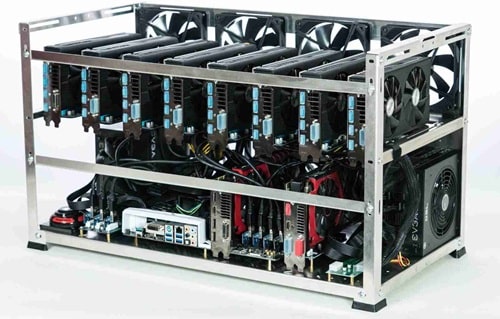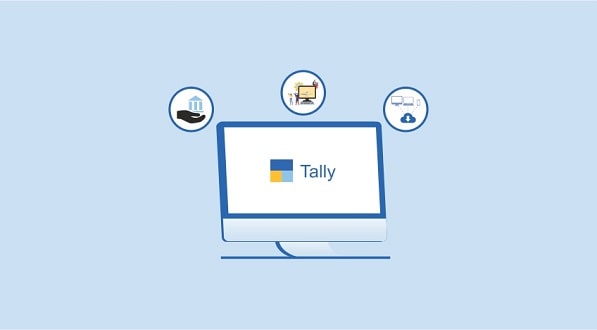Cryptocurrency mining has evolved into a highly profitable endeavor, driving miners worldwide to seek optimization strategies. At the core of this pursuit are mining rigs—specialized computing powerhouses engineered to tackle intricate mathematical tasks for blockchain transaction validation. However, efficient management and monitoring of these rigs are paramount for sustained profitability and hardware longevity. In this article, we will delve into the realm of advanced monitoring tools tailored for mining rigs. We will discuss their critical significance, robust features, setup procedures, and practical applications. In the dynamic crypto landscape, it’s vital for miners to remain abreast of the latest developments. Visit The official site and start learning about investing. Registration is easy and you can start learning right away!
Understanding Mining Rigs

What Are Mining Rigs?
Mining rigs are specialized computer systems tailored for cryptocurrency mining. They consist of various components, including a central processing unit (CPU), graphics processing unit (GPU), motherboard, power supply unit (PSU), and cooling systems. These rigs are optimized for the sole purpose of solving complex cryptographic puzzles required for blockchain transactions.
Components of a Typical Mining Rig
- CPUs: Responsible for general computations and coordination.
- GPUs: Specialized hardware for cryptographic calculations, typically used in mining.
- Motherboard: Connects and powers all components.
- PSU: Provides power to the rig.
- Cooling Systems: Essential for dissipating heat generated during mining.
Also Read: The Beginner’s Guide to Mining and Trading VeChain (VET)
The Mining Rig Lifecycle
Mining rigs have a finite lifespan due to the continuous strain of mining operations. They go through stages of setup, operation, maintenance, and eventual retirement. Advanced monitoring tools play a crucial role in prolonging each stage, enhancing efficiency and profitability.
The Importance of Monitoring
Why Is Monitoring Crucial for Mining Rigs?
- Mining rigs generate substantial heat and stress during operations, which can lead to hardware failures if left unchecked.
- Real-time monitoring enables miners to detect issues promptly, preventing costly downtime.
- Ensures optimal mining performance, maximizing returns on investment (ROI).
- Provides valuable data for efficiency optimization.
Common Challenges in Mining Rig Management
- Temperature control and overheating.
- Hashrate fluctuations.
- Connectivity issues.
- Security threats, including malware and hacking attempts.
The Role of Monitoring in Maximizing Profitability
- Monitoring tools help maintain consistent hashrates.
- Temperature and cooling monitoring prevent overheating and hardware damage.
- Quick issue resolution minimizes downtime, increasing mining revenue.
Essential Features of Advanced Monitoring Tools
Real-Time Performance Metrics
Hashrate Monitoring
Advanced tools provide real-time hashrate data, allowing miners to track mining power accurately. This metric helps identify performance issues promptly and ensures optimal mining efficiency.
Temperature and Cooling Status
Monitoring the temperature and cooling status of mining rigs is crucial for preventing overheating and hardware damage. Advanced tools offer temperature alerts and fan speed controls to maintain an optimal operating environment.
Remote Accessibility and Control
Advanced monitoring tools offer remote access to mining rigs, enabling miners to monitor and manage their operations from anywhere with an internet connection. This feature is invaluable for miners with multiple rigs or those who wish to monitor their setups while on the go.
Alerts and Notifications
Monitoring tools can send alerts and notifications to miners in case of issues or critical events. These alerts may include temperature spikes, hashrate drops, or connectivity problems, allowing miners to address problems promptly and reduce downtime.
Efficiency Optimization
Some tools come with features for optimizing mining operations. They can automatically switch between different mining algorithms to maximize profitability or suggest adjustments to power settings for greater energy efficiency.
Security and Threat Detection
Advanced monitoring tools often include security features to protect mining rigs from threats like malware and hacking attempts. These tools can identify and respond to potential security risks, ensuring the safety of your mining operation.
Popular Advanced Monitoring Tools
NiceHash
NiceHash offers a comprehensive monitoring and management platform for mining rigs. It provides real-time data on hashrates, temperatures, and power consumption. Miners can also use NiceHash to access various mining pools and algorithms, optimizing their profitability.
Hive OS
Hive OS is a user-friendly monitoring and management system designed for both novice and experienced miners. It offers remote access, detailed performance metrics, and automated optimization features. Additionally, Hive OS supports a wide range of mining hardware and algorithms.
Minerstat
Minerstat is a powerful monitoring tool with features like overclocking, remote control, and profitability tracking. It supports ASICs and GPUs, making it suitable for various mining setups. Minerstat also offers customizable alerts and notifications.
Awesome Miner
Awesome Miner is known for its versatility and compatibility with different mining software and hardware. It provides detailed statistics, notifications, and automatic profit switching between mining pools and algorithms.
Comparing the Pros and Cons of Different Tools
To choose the right monitoring tool for your mining rig, consider factors like your hardware, preferred cryptocurrencies, and the level of control and customization you require. Each tool has its strengths and weaknesses, so it’s essential to research and select the one that best fits your needs.
Setting Up and Configuring Monitoring Tools
Step-by-Step Guide to Installing Monitoring Software
- Downloading and installing the monitoring tool.
- Configuring your mining hardware.
- Connecting your rigs to the monitoring platform.
- Setting up alerts and notifications.
Configuration Tips for Maximum Efficiency
- Adjusting overclocking settings for optimal hashrates.
- Fine-tuning power consumption for energy efficiency.
- Choosing the right mining pools and algorithms.
Troubleshooting Common Setup Issues
- Addressing connectivity problems.
- Resolving software conflicts.
- Dealing with hardware compatibility issues.
Future Trends in Mining Rig Monitoring
Machine Learning and Predictive Analytics
Discuss the potential for machine learning and predictive analytics to anticipate hardware issues and optimize mining operations further.
Integration with Decentralized Finance (DeFi)
Explore how the integration of mining rig monitoring tools with DeFi platforms can provide new opportunities for miners to leverage their assets.
Sustainability and Green Mining Initiatives
Investigate the role of monitoring tools in promoting sustainable and environmentally friendly mining practices, reducing energy consumption, and mitigating carbon footprints.
Conclusion
As cryptocurrency mining continues to evolve, advanced monitoring tools for mining rigs have become essential for miners seeking to maximize profitability and ensure the longevity of their hardware. These tools offer real-time performance metrics, remote accessibility, and security features that are critical in today’s competitive mining landscape. By adopting and leveraging these tools effectively, miners can stay ahead of the curve and secure their position in the world of cryptocurrency mining.














